Photo
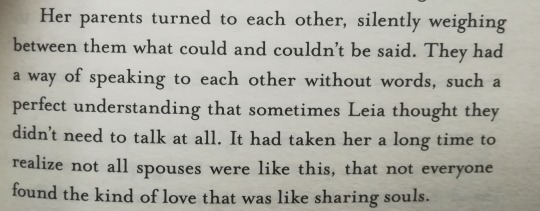
Bail/Breha relationship goals, flawless couple, I’m in love with their love, I AM SO SAD ABOUT THEM
283 notes
·
View notes
Text
Bail Organa is actually the greenest flag in all of Star Wars. He believes in the Republic and after it fell he founded a rebellion. He's married and took he wifes last name. He raised the daughter of his best friend as his own. On that note, his best friend is a woman in politics. He supported the Jedi during the Republic and the Empire. He probably wears Sweaters Breha bought him to Senate Meetings. I love him sm.
504 notes
·
View notes
Text
Der Poltergeist
A poltergeist (poltern = to clatter, to rumble, to crash about, to make a racket; der Geist = ghost, specter /spectre, phantom, wraith, haint /hant) is a worldwide phenomenon originating from Germany that is also dealt with in parapsychology, psychology, psychiatry and demonology. It is intended to describe a certain form of spirits and demons and their alleged work.
Poltergeists are said to nest in houses and regularly visit buildings, make themselves known through supernatural events – such as knocking noises and flying furniture – and deliberately harass the residents or visitors there. According to those affected, the spirit itself is formless and does not manifest itself.
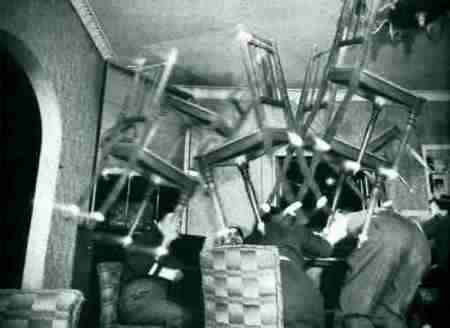
According to parascience, poltergeist activities differ from traditional hauntings in their short duration and their primarily physical and acoustically perceptible nature. Scientists, psychologists and the church are opposed to the explanation of the phenomenon as a “supernatural” event through parapsychology. There is no scientific and therefore credible evidence for the existence of poltergeists, especially since many of the alleged appearances have been exposed as frauds.
Parascientists define the phenomenon “poltergeist” as follows: The ghosts themselves should be invisible to the observer; only their activities (so-called poltergeist activities) are visible and perceptible. In contrast to classic spooky and ghostly phenomena, the poltergeist does not take any form during its activities and cannot be filmed or photographed. Its activities include a wide variety of acoustic, sensory and optical phenomena. These are often very limited in duration and in most cases are said to be related to the psychological and physical condition of individual, rarely several, people present at the scene of the event. This is also what distinguishes poltergeists from classic haunting ghosts: the former are tied to a person, can appear at any time and in any place, and their behavior changes abruptly between activity and inactivity. Hauntings are local and have a continuous duration, usually over centuries or even millennia. Finally, poltergeists are invisible but noisy and hauntings are visible but completely silent.
According to the parascientific definition, “typical” poltergeist activities include scratching, knocking and banging noises, cold spots, voice perception and the switching on and off of electronic household appliances such as televisions, radios, light bulbs and computers without any apparent cause or visible intervention by those present. “Higher” poltergeist activities include levitations of people or objects, the disappearance and reappearance of objects, and light phenomena such as ball lightning and will-o-the-wisps (known in Japan as Hitodama). Almost all poltergeist activity results in the destruction of house and property furnishings, particularly furniture, dishes, and/or window panes, although no one has ever been seriously injured.
25 notes
·
View notes
Text
Das Petermännchen
Petermännchen (the little Peter manikin) is the ghost of the castle of Schwerin, who, according to several legends, had one of his places of work in the cellar vaults of the Schwerin landmark.
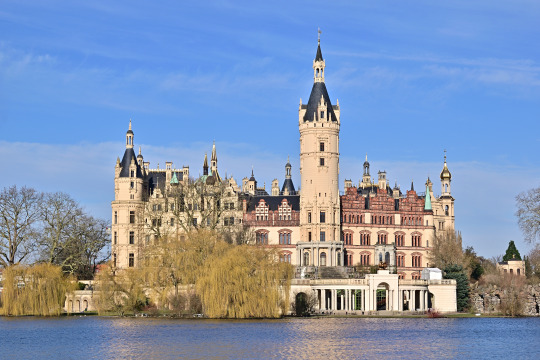
According to folk memory, the vaults of the castle were connected to the Petersberg in Pinnow, where the good-natured goblin with a dark facial expression worked as a blacksmith. In other versions, the figure travels the way from Pinnow to the castle over the lake or even through the air. The place where he sleeps also varies in different versions of the legend.
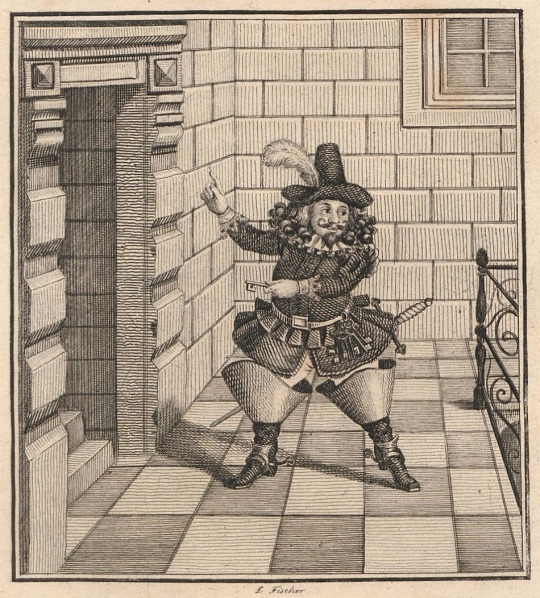
The dwarf-shaped figure, which always carried a lantern, a sword and a keychain, is said to have punished thieves and intruders with plagues, jokes and nightly rumbles and driven them to flee while he rewarded honest people. In addition, the goblin woke up soldiers, who had fallen asleep during the night watch.

One of Petermännchen's most consequential devilries, involved general Wallenstein during the Thirty Years' War. Legend has it that Petermännchen pestered Wallenstein, who was enfeoffed in 1628 by emperor Ferdinand II. with the Duchy of Mecklenburg, during his first night in the castle of Schwerin so badly that the great general left totally sleep-deprived and never returned again to Schwerin. Instead, the residential town of Güstrow became Wallenstein's capital.

37 notes
·
View notes
Text
Uglei
Lake Uklei is located near the city of Eutin in the state of Schleswig-Holstein. A hunting lodge of the dukes of Oldenburg is located near the lake, close to ancient mounds of pre-christian, Slavonic, and medieval origin. Like with many silting up lakes, which feature trees growing in the shallow waters, and abandoned fortifications, there is a legend connected to the place.

Up on the hill where the hunting lodge now stands, there used to be a castle in which a young, handsome but wild knight lived. Down in the valley, there was a chapel embedded in lush green meadows. The knight promised to marry a peasant girl named Uglei, but then he got engaged with a countess. Poor Uglei died of a broken heart. During the wedding, the spirit of Uglei appeared before the knight, a severe thunderstorm approached, the chapel sank below the ground under thunder and lightning and the lake was created. Only the preacher, the bride and a small, innocent girl who had stepped onto the wooden steps of the altar were saved. But sometimes, in calm weather, the sound of the chapel bell and the crying of Uglei can still be heard from the water.

51 notes
·
View notes
Text
Walrider
A Walrider is a mythical creature of popular belief in the region of Oldenburg in the state of Lower Saxony. It sits on the chest of sleeping people at night and causes nightmares, anxiety and shortness of breath. The idea of pressure spirits exists throughout the German-speaking area and many parts of Europe - with different names and forms depending on the region. They are commonly known in southern Germany and Austria as Druden.
Walriders are people (mostly women) who are condemned to find a victim to press every night: adults, children and pets are haunted, but also trees and stones. Their soul separates from their body and can enter a room as a ghost through the smallest cracks and keyholes and then appear in various forms (e.g. as a cat, straw or feather).
Someone who has to exercise this curse knows about it, but keeps it a secret from those around them. Anyone who is burdened with the curse can only be freed from it if they are given a very tame and dear pet, which they can then possess so that it dies.
Counteragents against walriders are the pentacle, pebbles with natural holes, or special knives with nine half-moons and nine crosses engraved on the blade. Hanging a pebble with a hole on a newborn's crib is said to prevent cot death.
Walriders can be exposed by giving them the order to visit the next day in order to borrow something. The first person to knock on the door and ask for the named object the next morning is the walrider, who must then be persuaded to abstain from their nightly malpractices.
42 notes
·
View notes
Text
Der Klabautermann
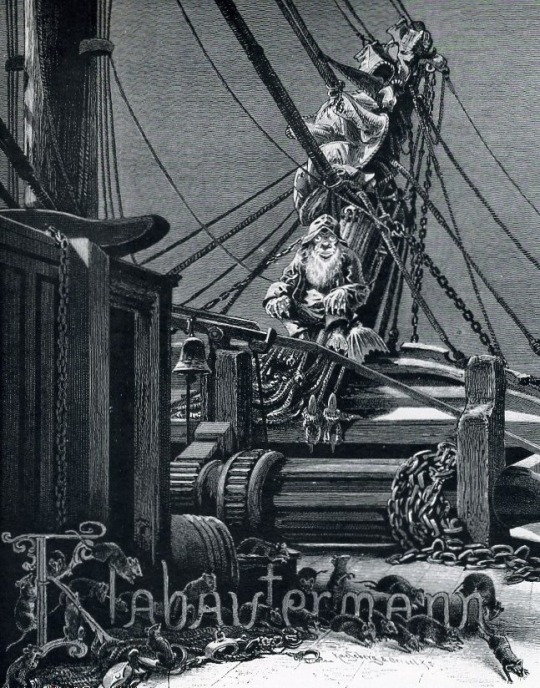
The Klabautermann, Kalfatermann or Klabattermann (from Low German klabastern “to rumble”, “to walk around noisily” or from also Low German kalfatern “to seal with pitch and tow”) is, in seafaring superstition, a ship’s spirit or goblin who – usually invisibly – warns the captain of dangers and likes to play practical jokes.
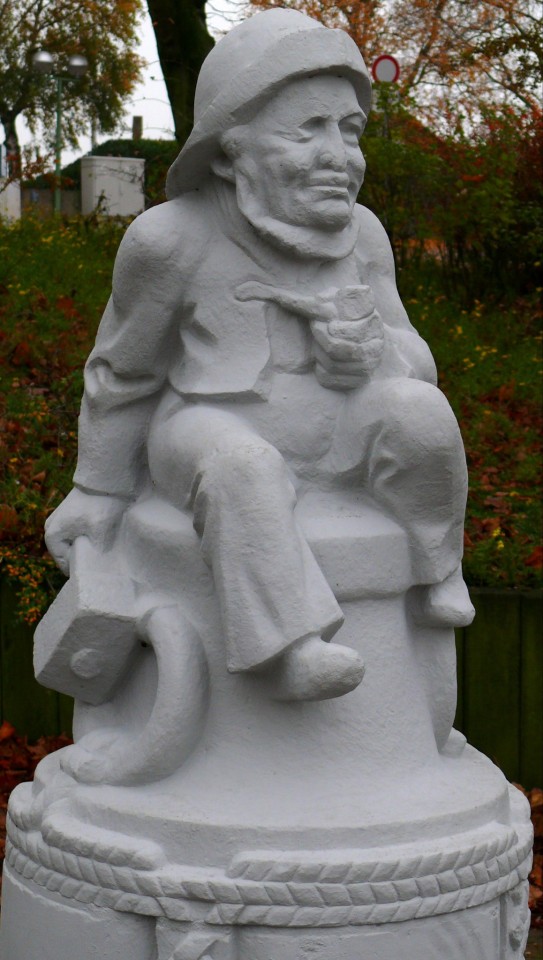
The figure of the Klabautermann is associated with sailing. He lives in the hold, where he hammers, piles up and throws boards; only sometimes he lives under the windlass. He also comes on deck, climbs into the mast, climbs in the rigging and sits on the bowsprit or jib boom of sailing ships. His appearance on a ship is said to be a bad sign and indicates the impending danger of the ship sinking.

The Klabautermann helps in shipbuilding by sealing the ship's deck. On board he makes himself noticeable through rumbling and other noises. It is said: “If he knocks, he stays, if he planes, he goes.” His appearance is that of a sailor - with a hammer and a pipe, sometimes with a sea chest, with red hair and green teeth. Some sailors claim he doesn't leave the ship until it sinks; others, however, say that he occasionally disembarks to announce the ship's arrival at the captain's house. According to an old sailor custom, every ship has a chicken on board to deter the Klabautermann.

84 notes
·
View notes
Text
Nachzehrer
Nachzehrer (after-feeder) is the term commonly used in German folk belief for a revenant or undead creature that is very closely related to vampires and shares a number of essential characteristics with them.
Contrary to a long-standing belief in folklore studies, the distribution area of the Nachzehrer is by no means limited to the partly Slavic regions in the east and north-east of Germany, but was also widespread in the west as far as the Rhineland. There, when old cemeteries in the Eifel were being abandoned, skeletons were discovered lying face down—a clear sign of the burial of a corpse that was considered dangerous.
The legends and oral traditions describe the Nachzehrer as follows: In contrast to the vampire, who must leave his grave, the Nachzehrer lies or sits underground and sucks the vital energy from the living, usually his survivors or the inhabitants of his village. With this idea, it must be mentioned that most traditional reports of vampire attacks do not speak of bloodsucking at all, but rather vaguely of "strangling" or "weakening" the victim. The Nachzehrer carries out his sinister work by "calling" his victim through his open mouth or by establishing a telepathic connection with him through his open "evil" eye. He often chews on his victim's shroud or even their arms until everything is gnawed away. As long as he is still chewing, people either die of starvation or of an epidemic. Anyone who dies as a result of the actions of a Nachzehrer does not become undead themselves, however. In order to effectively banish a potential Nachzehrer, appropriate measures had to be taken before the burial. Under no circumstances must the eyes or mouth allowed to be left open, which is why the dead person's eyes had to be closed without looking into them, as this would have established telepathic contact between the Nachzehrer and a future victim. Under no circumstances must the dead person's mouth allowed to come into contact with the shroud or any other piece of cloth. The corpses were often tied up, sometimes only symbolically, such as with a rosary around the wrists. Banishing metal objects (scissors, nails, knives) were often placed on the dead person's chest. The bereaved also frequently poured dried pulses or pebbles into the coffin. Popular belief held that the undead had to count these before they could begin their sinister activities. But since they was possessed by the devil, they could never eat more than two peas or stones, because they was not allowed to say the sacred number "three" (symbol of the Holy Trinity).
If it was nevertheless believed that a Nachzehrer had caused harm, the grave could be opened. Then the measures known from southeastern European vampire beliefs were carried out, such as beheading, cutting out the heart and staking.
65 notes
·
View notes
Text
Weiße Frauen / White Ladies
White ladies are ghosts that are said to have haunted several castles of European noble families.

The oldest reports of the apparition date from the 15th century, but belief in the white ladies was most widespread in the 17th century. Although there are similarities to other female ghosts in European folk belief – for example the Irish and Celtic banshee – the white lady is a phenomenon that first emerged in and was typical of the high aristocratic culture of the early modern period. Belief in miracles during the Counter-Reformation turned the ghost into an attribute of class that, like coats of arms and legends of lineage, could underline the importance of a noble family. The White Lady of the Hohenzollern family is particularly well known.
The White Lady of the House Hohenzollern
The White Lady of the House Hohenzollern haunts several castles and palaces that are or used to be owned by members of this noble family.
Plassenburg
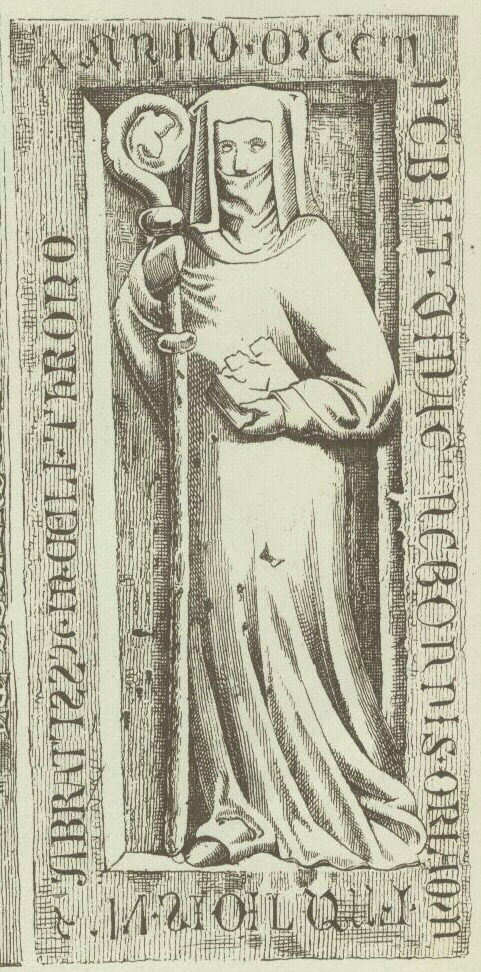
The most well-known legend about the White Lady has its origins at the Plassenburg Castle above Kulmbach and is linked to the Hohenzollern family. The castle's mistress Kunigunde, widow of Count Otto of Orlamünde, had fallen in love with Albrecht the Handsome, son of the Nuremberg burgrave Frederick IV. The latter spread the word that he would marry her if four eyes didn't stand in the way. This referred to his parents, who were against such a union. However, Kunigunde misunderstood the message and related it to her two children, a two-year-old girl and a three-year-old boy. She stabbed the children in the head with a needle, killing them.
Albrecht then renounced her. Kunigunde went on a pilgrimage to Rome and obtained forgiveness for her sins from the Pope, on the condition that she found a monastery and enter it. As penance, she slid on her knees from the Plassenburg Castle into the valley of Berneck and founded the Himmelkron Monastery, where she died as abbess. In a local version of the Himmelkron legend, the monastery already existed at the time of the murder and the two children were buried there. Kunigunde, sliding on her knees, saw the monastery on a hill between Trebgast and Himmelkron and died there of exhaustion.
From then on, the White Lady appeared at the Plassenburg to warn the Hohenzollerns of impending deaths and other impending misfortunes - a worrying but usually not violent phenomenon. According to legend, however, she behaved differently when Margrave George Frederick I, also a Hohenzollern, wanted to take possession of the Plassenburg after its destruction in 1554 during the Second Margrave War and subsequent reconstruction. The White Lady then went so far as to rattle chains, rage around, frighten ladies-in-waiting and finally strangle the Margrave's cook and quartered driver, which caused the latter to leave the Plassenburg.
Berlin City Palace
The White Lady was first seen in the Berlin City Palace on 1 January 1598. There she is said to have appeared to Johann Georg, the Hohenzollern Elector of the Margraviate of Brandenburg, eight days before his death. In this case, the ghost was seen as the spirit of Anna Sydow, the mistress of Joachim II, the Elector's father, who died in 1575 in the Julius Tower of the Spandau Citadel and whom Johann Georg had had dispossessed and imprisoned, contrary to his documented promise.

The White Lady continued to appear frequently in the Berlin City Palace. In 1619 she is said to have appeared there before the death of Johann Sigismund. In 1651, newspapers reported about great concern about the continued existance of the House Hohenzollern in the male line after the White Lady appeared. 1 years previously, Prince Wilhelm Heinrich, the only heir to the throne, had died age 1½ years, and the elector's wife had not yet become pregnant again.
In 1660, she is said to have been seen before the death of Elisabeth Charlotte, the mother of the Great Elector. She is also said to have appeared to Louise Henriette of Orange, and before the death of the Great Elector in 1688, to the court preacher Anton Brusenius. According to a report by the historian Karl Eduard Vehse, the White Lady was once quite heartily approached under the Great Elector. Konrad von Burgsdorff, a confidant of the Elector and a cold-blooded man, is said to have suddenly seen the White Lady on the steps in front of him one evening after he had put his master to bed and was about to go down a small staircase to the garden. Once he had overcome his initial shock, he called out to the figure: "You old sacramental whore, haven't you drunk enough princely blood yet, do you want more?" Apparently annoyed by this disrespectful address, the White Lady grabbed him by the collar and threw him down the stairs so that his bones cracked. Other attempts to get hold of the White Lady were not always unsuccessful: under Frederick William I, she was arrested twice. Once it was a kitchen boy who had dressed up as the White Lady and was whipped as punishment, and the other time it was a soldier.
Further apparitions occurred before the death of Frederick I in 1713 and that of Frederick William II in 1797. When the health of Frederick William III became very precarious in the winter of 1839/40, the lady-in-waiting Caroline von der Marwitz wrote a report about the appearance of the White Lady.
She also appeared – perhaps a little prematurely – before the completely unsuccessful assassination attempt by Heinrich Ludwig Tschech on Frederick William IV in 1844. On this occasion, she is said to have appeared at night in the Swiss Hall of the City Palace, wringing her hands. She also appeared in 1888 before the death of Frederick III. Even when the National Socialists were in charge of the Berlin Palace instead of the Hohenzollerns, she is said to have appeared again on the night of May 26, 1940.
It is uncertain whether the White Lady will reappear in the Humboldt Forum, the newly built partial reconstruction of the Berlin City Palace. Some superstitious people say that the reconstruction was intentionally left incomplete to stave off the White Lady of the House Hohenzollern.
Heidecksburg

In the Heidecksburg near Rudolstadt (Thuringia), the White Lady is said to have appeared to Prince Louis Ferdinand of Prussia, also a member of the Hohenzollern family, in the Green Salon, as his adjutant Karl von Nostitz-Jänkendorf reported. The next day, 10 October 1806, the prince was killed in the Battle of Saalfeld.

Other places
The White Lady also appeared in other places in possession of the House Hohenzollern and its branch lines. Apoearances are reported from Bayreuth, Lauenstein Castle, Hohenzollern Castle, and Kuckuckstein Castle.
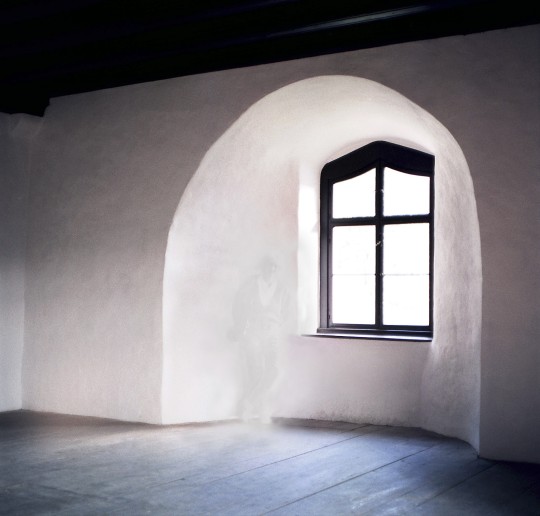
Places belonging to other noble families are haunted by White Ladies as well. In Friedenstein Palace in Gotha, the ghost of Dorothea Maria of Anhalt is said to moanfully wander the rooms at night. Eleonore von Dönhoff is said to haunt Kossenblatt Castle. Oftentimes, noble ladies who found a violent death are linked to White Ladies, such as Jakobe von Baden in Düsseldorf Castle.
In Aussel Manor in Batenhorst near Rheda-Wiedenbrück, the wife of a former estate owner is said to haunt the premises. She is said to have been walled in in the cellar after her husband had been away for a long time during the war and caught her with a lover. She is said to have starved to death there because her husband did not return after taking part in another military campaign.

97 notes
·
View notes
Text
Der Glühschwanz
The Glühschwanz (glow tail) is a German specter and mythical creature looking like a glowing dragon. The legendary figure is said to have flown at night over the villages with a long glowing tail. It is said to have entered the houses through the chimneys to visit witches, bringing them food and drinks, expecting to be fed sweetened hot milk in return. If witches refused to feed the Glühschwanz, he would set their chimneys on fire.
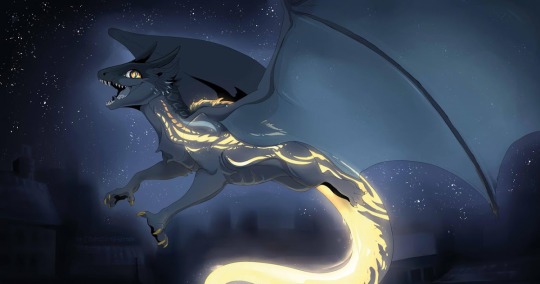
If a farmer did not pay the right wages to his servants, or a day laborer did not serve his employer properly or stole grain or eggs, the Glühschwanz visited them at midnight and kept circling over their houses. His glowing tail illuminated the roofs of the bad guys so that everyone could see who had done disgraceful things. If in these cases meat was hanging in the chimneys for smoking, the Glühschwanz shat into the chimneys so the meat was spoiled. The entire house was filled with a disgusting stench for weeks. On the other hand, the Glühschwanz rewarded honest people by dropping coins from his glowing tail through the chimney into the house.
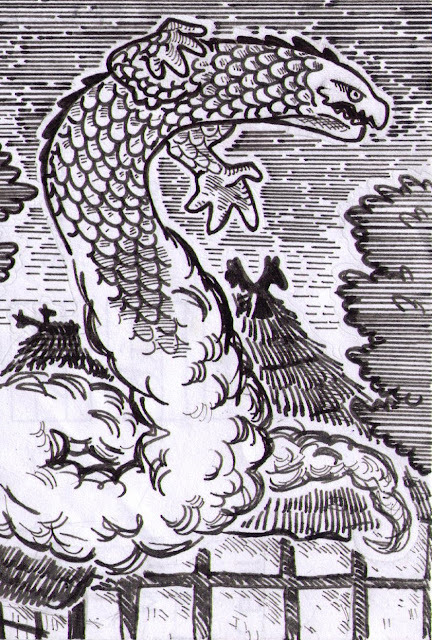
The Glühschwanz was sighted in the area surrounding the cities of Peine and Helmstedt as well as around the Elm hills east of Braunschweig in Lower Saxony.
Sometimes, shooting stars were confused with the Glühschwanz.
114 notes
·
View notes
Text
Aufhocker
An Aufhocker (top sitter), also called Huckup, is a pressure spirit and shapeshifter in German folklore. It is a kind of goblin, who jumps onto the shoulders or backs of hikers who are still out at night, becoming heavier with each step.
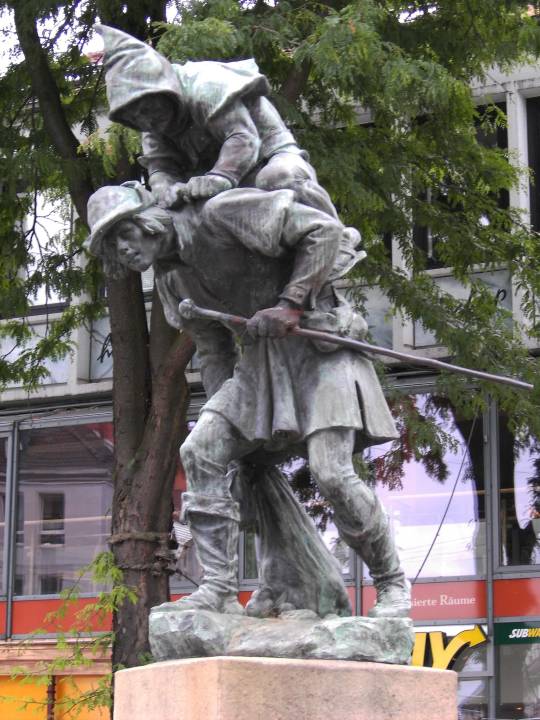
The hiker is paralyzed, suffers from feelings of oppression and anxiety and is unable to turn around. The Aufhocker remains sitting on the hiker until he is released by the approaching light, a prayer or the ringing of a bell.
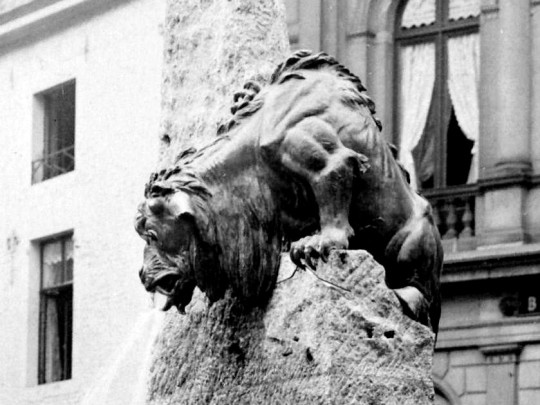
The nightmarish experience often takes place in three phases. The hiker is first approached or accompanied by a sinister being, then the demonic companion grows to supernatural size and finally jumps onto the back of the victim. The Hackestüpp from Düren is one such Aufhocker, who initially accompanies the victims as a playful little dog, then jumps onto their backs, cannot be shaken off and becomes heavier with each step.
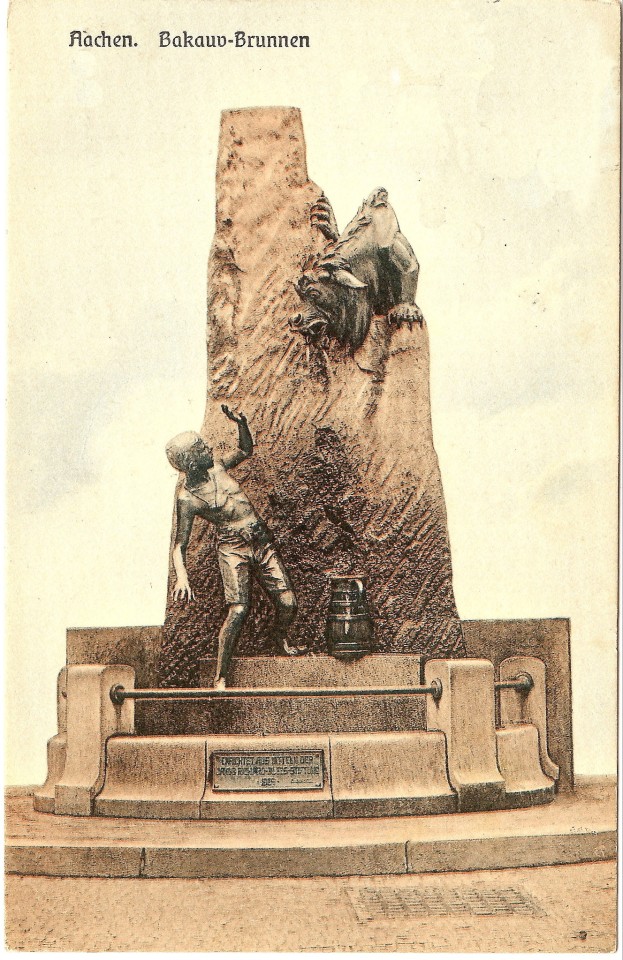
Typical haunted places such as streams, bridges, lakes, forests, ditches, crossroads, ravines, churchyards and sites where murders or executions happened are the usual places for an encounter with an Aufhocker, which can result in physical and mental illness and sometimes even death for the hiker. The Bahkauv ("stream calf") of Aachen is an Aufhocker who is said to frighten drunken men at night and ask them to carry him on their shoulders.
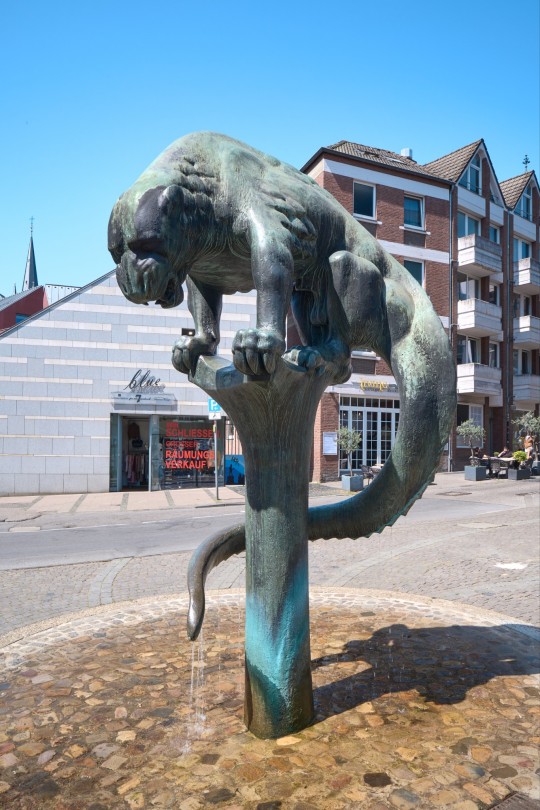
Sometimes an Aufhocker first appears as pitiful old women; but they can also take on animal forms such as a bear, a calf (as in the Bahkauv), a werewolf (as in the Stüpp of the Western Rhineland) or a dog (as in the Sürthgens Mossel of the Hürtgenwald forest). Elemental beings such as mermen or will-o'-the-wisps also act as Aufhockers. What is important is not the shape of the Aufhocker, but the oppressiveness of the situation. Aufhockers are not limited to German folklore. An Aufhocker in the shape of an old man is also mentioned in the oriental fairy tale collection One Thousand and One Nights, in which he meets "Sinbad the Sailor" on a deserted island.
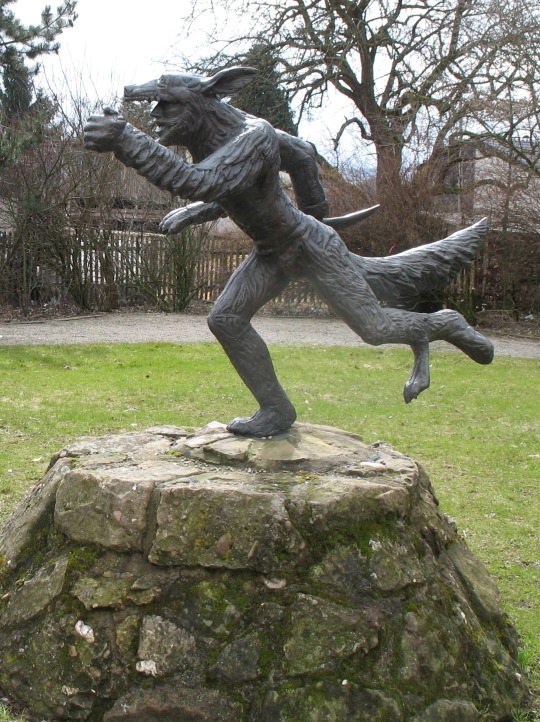
The figure of the Aufhocker has its origins in the fear of the revenant, the undead. The oldest reports of Aufhockers clearly speak of "haunting corpses" and not of goblins or ghosts. Unlike Nachzehrers, who did not have to leave their grave if they wanted to harm the living, other undead, like vampires, rose from the grave and stole people's vital force. This could happen in a tangible way by sucking out blood, but also in a more abstract form. As recent research has shown, this also applies to vampires, who are said in the oldest reports to have a damaging effect through "strangling" and "emaciating", but not through bloodsucking. In the western Rhineland, the Aufhocker merges with the werewolf to form the Stüpp, a dangerous monster that unexpectedly jumps on people's shoulders and forces the victims to carry him around, causing trepidations, anxiety, feelings of oppression and panic attacks until they die of exhaustion.
219 notes
·
View notes
Text
Die Roggenmuhme
The Rye Aunt
The Rye Aunt is a female cereal demon and children's fright of German folk tales, who lives in grain fields.
The Rye Aunt wanders up and down in the fields, feeds on the grain and tears out the immature ears. If she is angry with the farmer, she punishes him by drying out his fields. In general, however, the appearance of the Rye Aunt in the fields is a sign of a good harvest. During the harvest, she flees into the last truss. The Rye Aunt receives a share of the harvest, which is either left behind or thrown into the field. This custom is to propitiate the Rye Aunt and bring about a fertile next year.

The Rye Aunt is generally thought to live underground, in the empire of the roots or in a cave.
The Rye Aunt punishes lazy maids, who have not spun off their spinning rocks in the Boxing Week. The breath of the Rye Aunt brings illness and death.
Appearance
The Rye Aunt is often described as completely black or snow-white, and of superhuman size. Her arms are long or made of iron. Her fingers are fiery or iron. It is also said that the Rye Aunt has claws on her hands, which may also be made of iron.

The Rye Aunt has unusually large breasts that are so long that she can fold them over her shoulders. She also has more than two breasts. These can be black, iron, wooden or silver. They are pointed and hard, have glowing iron tips or are fiery. The breasts are filled with tar, poisonous milk or blood.
The Rye Aunt is described as an old womanwith a wrinkled face featuring stinging awns, a crooked nose, and wears glasses. She is sometimes even described as headless or said to have an iron heart.
In addition, she can change her shape, for example into a turtle, a snake, a frog, a wolf, a black cat, a horned animal or a dog with a blanket.

The Rye aunt is often dressed in black, but has also been seen dressed entirely in gray. Her clothes are ragged. Sometimes the Rye Aunt also wears a red skirt, or she wears a red dress and a red cap. Sometimes, she wears blue coat and wide flowing skirts. Often the Rye Aunt wears a white headscarf like a reaper. Sometimes she walks on crutches.
The Rye Aunt is associated with several weather phenomena. When the wind blows through the cornfield, people say that the Rye Aunt moves over the grain. She is also traveling with the whirlwind.
The Rye Aunt appears in particular at midday between 12:00 and 13:00. If she encounters someone in the fields at midday, she kills them or frightens them, casting spells. If she finds women who have recently given birth in bed between 12:00 and 13:00 and between 18:00 and 20:00, she does the field work for them. If she does not find women in childbed at the specified time, a misfortune will happen to the mother and the child.
The Rye Aunt is often seen as a child scare. Her activities as a child-scaring figure are extremely varied.
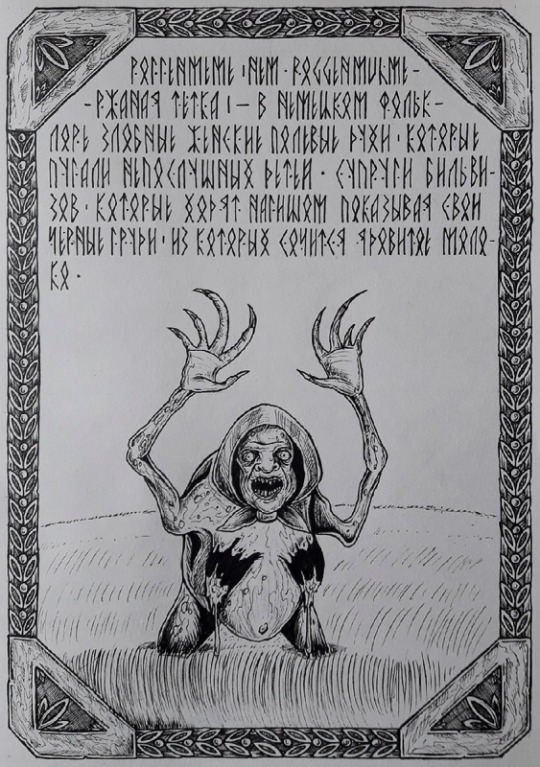
In their tale no. 90 The Rye Aunt, the Brothers Grimm tell that the Rye Aunt swaps human children with changelings, but brings back the right child if the changeling is not suckled. Elsewhere it is said that she steals illegitimate children at midnight.
The Rye Aunt lies in wait in the field for all those children who want to pick cornflowers in order to scare and punish them. She also lures children into the field by waving her arms. She abducts children by putting them in her big bag or basket, of by taking the children under her wide flowing skirts to bring them to the empire of the roots. She may also pull children to her with an iron fireplace poker and has them guarded by a toad. She leads children astray in the field and lets them starve to death, or she comes with her flock of elves and lays the children on cushions of flowers, whereupon they fall asleep and never wake up again. The Rye Aunt appears as a witch when she casts spells or the Evil Eye on children, She may also appear as a nightmare when she sends evil spirits to disobedient children at night.
Children often have to suck on the breasts of the Rye Aunt. Sometimes, disobedient children get the big breasts beaten around their ears. The Rye Aunt is said to, hug children so tight that they are pressed against her breasts die as a result from suffocation or getting crushed in her embrace. The Rye Aunt also crouches in wolf form, hiding in the grain, and is accompanied by small dogs that lure children into her iron embrace. She is also regarded as the mother of the rye wolves, who eat the children.
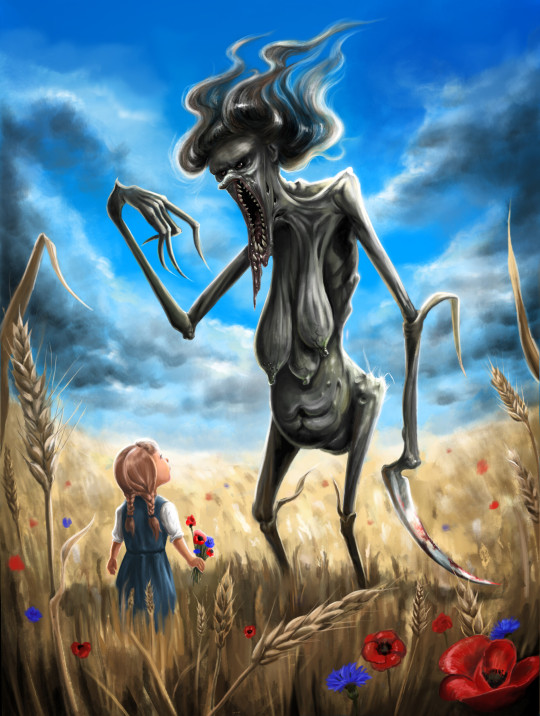
The Rye Aunt chases children on horseback or runs as fast as a horse herself. In the latter case, she chases children to death in races. She can also fly and takes children to the sea to drown them there. If she accosts children, they must die.
The Rye Aunt demands that children eat a slice of bread spread with tar. If they do not comply, she cuts off their heads. She also smears children with tar from a bottle or covers their eyes with tar. She also scratches out children's eyes or blows out their eyesight. The Rye Aunt strangles children, twists their necks or cuts off their heads, and also cuts off their necks, noses, ears, or fingers. She also beheads children with a sickle, a knife or a saw. She cuts off the children's legs with a scythe. The Rye Aunt also tears off children's legs.
The Rye Aunt binds children into a bundle with a thread or ties the children to a thread and then beats them up. She pinches children with iron pincers or uses a pinch. She stabs children with pikes, of which she has three, one by the head and one in each hand. The Rye Aunt also stabs children with stalks or drives nails into their heels.
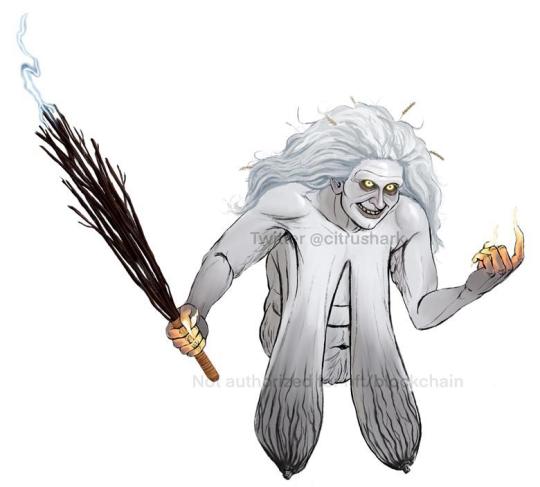
In her hand, the rye maid carries a rod or whip, which is to be regarded as a lightning rod. She also has a sceptre or an iron scourge, which she uses to beat children. She puts children in a nail barrel and rolls them around in it or drags them into a cave and crushes them there with a giant meat grinder. Otherwise, she also crushes children in an iron butter churn.
The Rye Aunt also bites and eats children. To get hold of children, she sets out traps. She slaughters and eats the children or kills and roasts them using her burning breasts and fingers. The Rye Aunt also throws children into a cauldron of hot water or sucks their blood.
All these stories were told children to deter them from wandering through the fields, which posed several dangers, including getting lost and freezing to death at night, encounters with dangerous animals, suffering injuries from farm equipment used on the fields, or merely the destruction of crops and yield loss by walking over the fields.
37 notes
·
View notes
Text
Because Tantiss isn't a place I ever wanted to go back. 😭


189 notes
·
View notes
Text

Thinking that Echo and Emerie meeting is setting up a larger story to be told in some sort of spin-off. That way if they do go the Rex and his clone rebellion route, they can have a primary female character (among all the male clones) involved who can add a lot to the story. Can you imagine how amazing Rex, Echo, Emerie, Gregor, and Howzer will be? In their search for Wolffe and Cody?? With some cameos of the remaining Batch (whoever that may be🫠) and Ahsoka? I really think this is going to be the next clone story!
290 notes
·
View notes
Text
Well per usual Echo and Omega are the only ones getting shit done.
Echo: Infiltrate Tantiss and start collecting data.
Omega: Start scouting and making an escape plan.
Hunter, Wrecker, and Crosshair: Play hide and seek with stormtroopers and fight a cave bear.
Rampart: Screams.
Yup sounds about right.
280 notes
·
View notes

